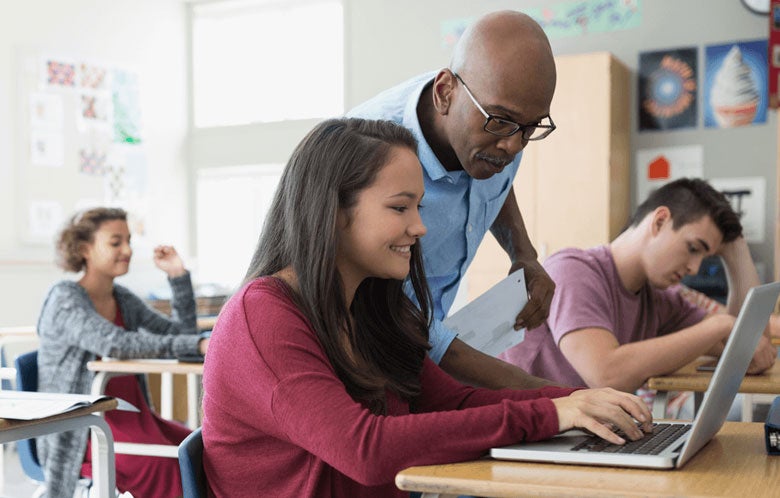INFOhio, Ohio’s PreK-12 digital library, supports digital literacy and encourages teachers and librarians to instruct students in digital literacy in order to prepare them for college and career.
There are so many definitions of digital literacy, and these definitions continue to be in flux as new technologies are born. Below are the two best working definitions that I use to drive my work in digital literacy:
- Digital Literacy is the ability to find, evaluate, utilize, share, create and analyze information technologies and the Internet. If students aren’t comfortable or capable of using digital tools provided, or they don’t understand the value of using them, they are at a major disadvantage.
- Digital Literacy combines creativity, functional skills, e-safety, effective communication, the ability to find and select information, collaboration, cultural and social understanding, critical thinking and evaluation.
So, in your busy school day, how can you hope to begin to be successful at incorporating digital literacy into the classroom? Here are eight ways to start:
- Be aware of the different levels of technological access and fluency in your library/classroom. Technology can separate the “haves” from the “have-nots.” If you are first aware of who has access (and what type ― phone, tablet, computer) and who doesn’t, it will allow you to have a starting point for teaching an area like digital citizenship.
- Inform students about local, public venues to access the Internet and about organizations that can help them develop digital literacy skills. You can also make partnerships with local businesses that have free Wi-Fi and ask them to put a sticker in their window saying there is free Wi-Fi access for the students of your school. Set ground rules with the students that they must act according to the business’s rules or else they lose their privileges.
- Model and discuss strategies for critically evaluating sources, finding useful and diverse information, expressing ideas in different formats, and troubleshooting common issues that arise when using digital tools. We all have been victim of technology not working when we need it to in the classroom. Instead of getting frustrated, use this as a learning opportunity for students. Teach them how to troubleshoot the problem. Walk them through the steps by talking aloud and seek suggestions from them.
- Post your technology needs and apply for a micro-grant on a site like DonorsChoose.
- Create, find and share lesson plans that develop digital literacy skills.
- Be sure to also advocate for (and support) more digitally rich student assignments. You can also partner with instructional technologists to provide teacher support for technology integration into the classroom.
- Ask yourself the following questions:
- What is the best technology tool for helping my students learn this content?
- How will this technology help my students achieve the learning objectives?
- What are the best practices for teaching with this technology tool?
- What are the most important technology tools you need for your job?
- What technology tools will improve your ability to do your job?
- Visit INFOhio’s Digital Literacy Resources on PearlTrees for hundreds of free resources on digital citizenship, media literacy, technology literacy, information literacy and more!
Works Cited:
Designer Librarian. “The Digital Literacy Divide.” Designer Librarian. Web. 27 Oct. 2015.
Designer Librarian. “TPACK Skills: Get ‘Em While They’re Hot!” Designer Librarian. Web. 27 Oct. 2015.
Hoekenga, Christine. “Beyond the Digital Divide: Teaching Students Digital Literacy.” Visionlearning Blog. Web. 27 Oct. 2015.
Vega, Vanessa. “Digital Literacy is the Bedrock for Lifelong Learning.” Edutopia. Edutopia, 25 Oct. 2011. Web. 27 Oct. 2015.



